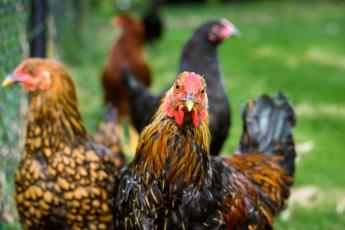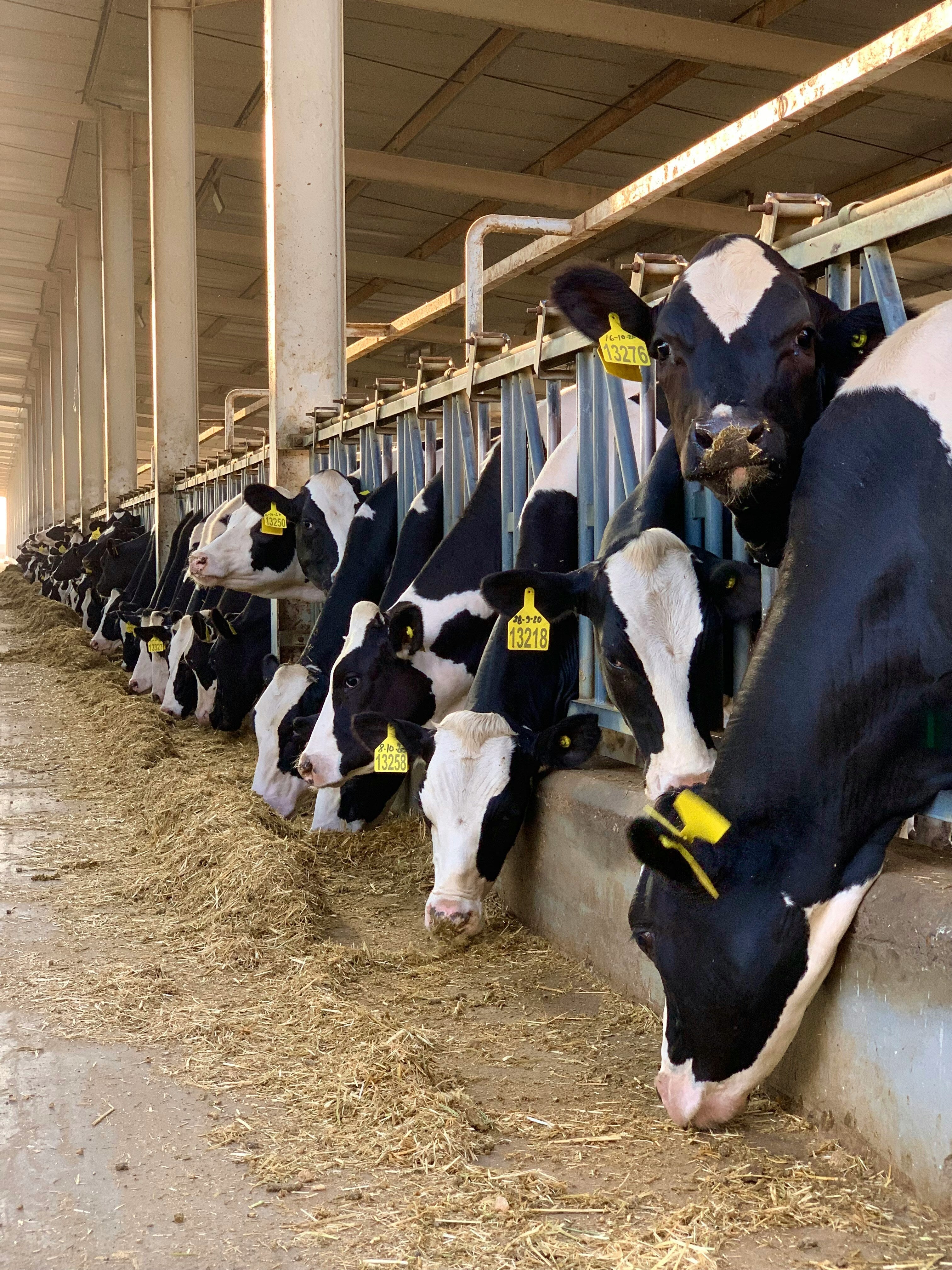Ask an Expert: What is Bird Flu, And Why Is It Such a Big Deal?


Bird flu headlines have been everywhere in recent months. But besides skyrocketing egg prices, how worried should consumers be about it? Cal Poly News spoke with animal science professor and veterinarian Kim Sprayberry about the agricultural impact and what we can do to protect ourselves and our pets.
What is bird flu, and why is it such a big deal right now?
Bird flu is the common term for the avian influenza strain that is currently in the news. You'll also see it called HPAI (highly pathogenic avian influenza) and H5N1. The latter term refers to the virus's surface proteins.
Bird flu is a big deal right now because it primarily adapted to infect birds, but is now infecting animals outside of that species — chiefly dairy cattle. Public health agencies are monitoring its spread carefully and with great interest because its ability to change and affect different species suggests the possibility that it could cause significant disease — and an epidemic situation — in humans.
When you see bird flu referred to as HPAI, the "highly pathogenic" part of that refers to the virus's effect in birds, not in dairy cattle or in other species. I do want to point out, however, that bird flu seems to be particularly virulent in cats, and has caused the deaths of both captive big cats and domestic house cats.
Humans working in close proximity to affected animals have become infected, but with mild symptoms: namely conjunctivitis, or runny, itchy eyes. Unfortunately, a few people have died from bird flu, including one person in the United States, but it's important to note that there were additional factors at play in those situations. So far, that outcome is very much the exception to the rule.
There is no commercially-available bird flu vaccine right now, for either animals or humans. The race is on to produce one.

How does bird flu spread, and what are some preventive measures to mitigate spread?
The way bird flu spreads depends on the species in question.
If we're talking about birds, it spreads from bird to bird when a bird comes into contact with nasal secretions or other bodily fluids from sick or already-dead birds.
In the case of dairy cows, it appears to be spread through nasal secretions and infected milk. The virus causes mastitis, which is an infection of the udder, and that then impacts the milk. During the milking process, milk containing the virus may get splashed onto equipment or into feeders or water tanks, and other cows can become exposed that way.
In both of those scenarios, the virus is also transmitted by disease vectors. One vector is rodents who feed on dead birds or infected tissues and then carry the virus to birds in other poultry houses or premises.
Humans can also be an important vector: if a worker, including a veterinarian, works at a poultry operation or dairy where there are affected animals and then travels to another premises without washing hands and changing clothes, they can serve as a portal of entry for the virus onto the new property.
One thing that does not happen is human-to-human transmission. Humans can become infected, but so far, no one has become exposed to the virus through another human, only by exposure to respiratory secretions or milk. This is an important point, and is why avian influenza is not presently able to cause epidemic spread among the human population.
As far as preventive measures go, that also depends on the species. Poultry farms and dairy farms will take biosecurity measures, such as limiting visitors on the premises and not introducing new animals into the facility, and poultry farms will also depopulate to minimize spread. For humans that work with these animals, basic personal protective equipment like gloves, face shields and masks that cover the nose can help them avoid spreading the disease among animals and themselves.
Wild birds are big disease vectors to other birds. If you have a small backyard flock of chickens, make sure there's nothing around that would be attractive and available to wild birds, like their food or water. If one of your birds develops symptoms of influenza or dies, contact your veterinarian, who can help with testing, or call the California Department of Food and Agriculture's Sick Bird Hotline at (866) 922-2473. There are other diseases besides influenza that are fatal to birds, and testing will help determine the cause.
Is it safe for us as humans to eat eggs, milk and poultry right now?
Yes, as long as everything has been fully cooked, or pasteurized in the case of milk. We know that 100% of virus in an infected milk sample is killed or neutralized by the pasteurization process. For pets, the same rules apply: no raw food or milk, even though raw pet food can be a safe and nutritious feed most of the time.
Do we need to do anything to protect our household pets, like cats and dogs?
Because there is currently no commercially-available bird flu vaccine, protection of pet dogs and cats takes the form of avoiding exposure. Don't allow your pets to roam or hunt near ponds or waterways where wild birds may congregate, as consuming infected wild birds — or even rodents that have been in contact with wild birds — can transmit the virus to the pet.
In general, just watch your pets and keep them healthy. If you notice respiratory signs such as sneezing, coughing or runny eyes, and are concerned about bird flu exposure, contact your veterinarian and let them know you'd like to rule out bird flu. That way, they can take advance precautions to see your animal.
In December, Governor Newsom declared a state of emergency over bird flu. What does that mean? Should we be worried?
Declaring a state of emergency doesn't mean there's imminent danger of the virus crossing over into the human population and causing dangerous disease. Remember, we have a lot of poultry and dairy farms in California that are impacted by bird flu. This is an administrative move that garners federal aid to help with the costs of monitoring, testing and interventions — which are expensive. Again, it should be noted that the "highly pathogenic" designation refers to the virus's effects on bird populations, not in other animals and not in humans.
What else should we know about bird flu?
Influenza viruses in general — including this one — are adept at mutating easily and quickly to avoid being neutralized by the immune system. The virus maintains its presence in nature by constantly being ahead of a population's immune recognition capabilities. That's why the CDC recommends we get a seasonal flu shot every year.
One of the scenarios where influenza viruses can be aided in mutating is when different strains of influenza mingle inside a host. That can facilitate viruses mixing genes and changing their surface proteins to the point where a new strain develops. These kinds of mixtures are thought to be how a newly-assembled influenza virus can become highly pathogenic and begin infecting other species. Even though the flu shot humans get doesn't protect against bird flu, it does help prevent human influenza from replicating inside a human and possibly being exposed to bird flu virus that this human may also have been exposed to.
Similar to animals, protection from avian influenza in humans means avoiding exposure. You can minimize your chances of exposure by staying away from infected animals or by wearing personal protective equipment such as gloves, face shields and masks that cover the nose if you work with dairy cattle or poultry.
The best thing to do is stay informed and avoid overreaction or panic. Here at Cal Poly, we show up every day and take care of our animals, being vigilant for signs that avian influenza has arrived. So far, we have not had any poultry or cattle become infected.
How can we stay informed about the latest developments with bird flu?
The best resources are the CDC website and the CDFA website. The CDFA website is updated daily.
Want more Learn by Doing stories in your life? Sign up for our monthly newsletter, the Cal Poly News Recap!




